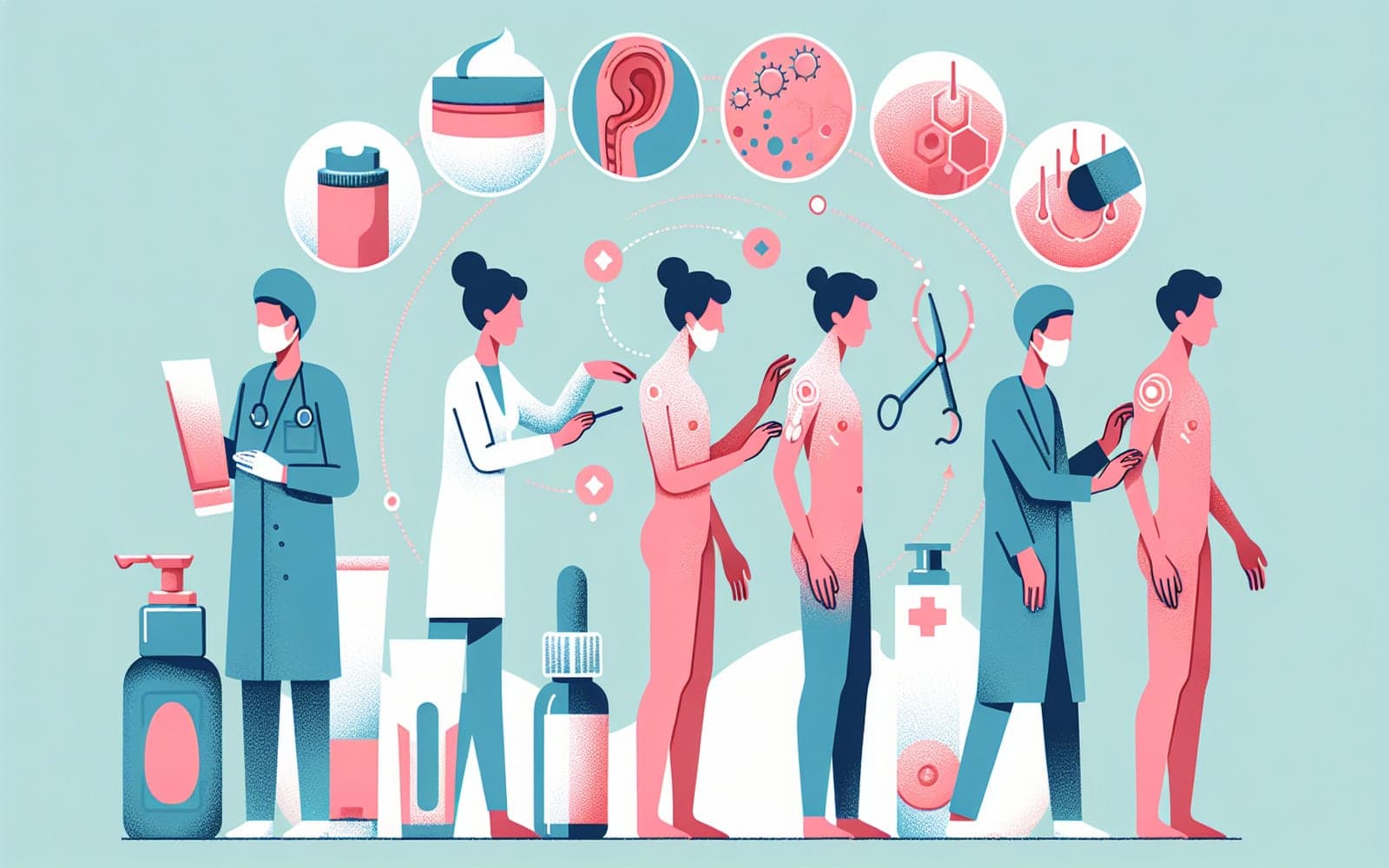Breaking Down Keloid Treatments: From Creams to Surgery
Published: Apr 24, 2024

Medically reviewed by Alan Lucks | MD, Alan Lucks MDPC Private Practice - New York on April 24th, 2024.
Keloids can be stubborn, but modern medicine offers a range of treatment options. Let's explore the most effective ways to tackle these troublesome scars, from simple creams to advanced surgical techniques.
Contents
Topical Treatments: The First Line of Defense
For many, treatment starts with topical options. Corticosteroid creams or tapes can help reduce inflammation and shrink smaller keloids. Silicone sheets or gels are another popular choice, working to hydrate the scar and potentially slow collagen production. While these treatments require consistent use over months, they're non-invasive and have few side effects.
Injections: A Deeper Approach
When topical treatments aren't enough, doctors often turn to injections. Corticosteroid shots directly into the keloid can be highly effective, especially for newer or smaller scars. These injections work by suppressing inflammation and breaking down excess collagen. Some doctors combine steroids with other medications like 5-fluorouracil for enhanced results. While more invasive than creams, injections can provide faster improvement.

Advanced Therapies: Lasers and Cryotherapy
For stubborn keloids, more high-tech options come into play. Laser therapy can target blood vessels in the scar, reducing redness and potentially shrinking the keloid. Cryotherapy, which involves freezing the scar tissue, can also be effective. These treatments often work best when combined with other methods like steroid injections.
Frequently Asked Questions
It varies, but most require several months for noticeable improvement.
Coverage varies; some plans may cover treatment if medically necessary.
Complete removal is challenging, but significant improvement is possible.
Some show promise, but medical treatments are more reliable.
Key Takeaways
The best keloid treatment plan depends on the individual scar and patient, often involving a combination of therapies for optimal results.
Ready to tackle your keloids? Consult with Doctronic to explore which treatment options might work best for your unique situation.Related Articles
References
Ogawa R, Akaishi S, Kuribayashi S, Miyashita T. Keloids and Hypertrophic Scars Can Now Be Cured Completely: Recent Progress in Our Understanding of the Pathogenesis of Keloids and Hypertrophic Scars and the Most Promising Current Therapeutic Strategy. J Nippon Med Sch 2016; 83:46.
Trisliana Perdanasari A, Torresetti M, Grassetti L, et al. Intralesional injection treatment of hypertrophic scars and keloids: a systematic review regarding outcomes. Burns Trauma 2015; 3:14.
This article has been reviewed for accuracy by one of the licensed medical doctors working for Doctronic. Always discuss health information with your healthcare provider.

